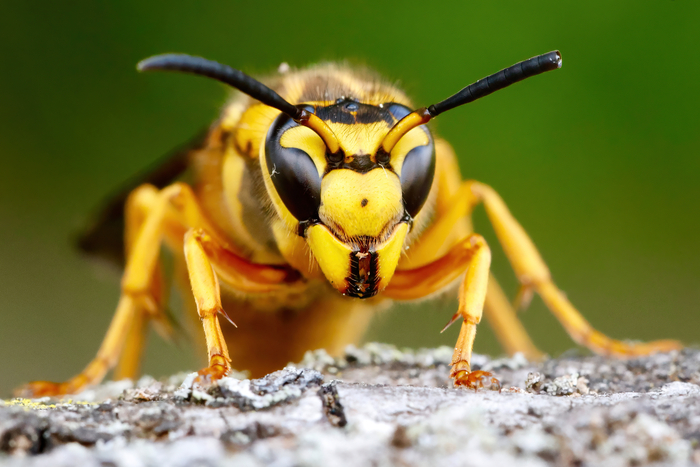
Feel better faster. Get care today.
From the clinic or your couch. Find high quality, same-day urgent care for you and your kids. Book an urgent care visit today.

Yellow jacket stings are the most common insect sting reported in the United States, affecting thousands of individuals each year. While these stings may seem like a minor nuisance for many, they can pose serious health risks, particularly for those who are allergic or sensitive to venom. Symptoms can range from mild discomfort to severe allergic reactions that may be life-threatening.
Understanding the signs of a yellow jacket sting and knowing how to respond effectively is crucial for ensuring safety and well-being. Read on to explore the symptoms associated with yellow jacket stings and appropriate treatment options to manage pain and prevent complications.
When it comes to identifying the source of an insect sting, it can sometimes be challenging to determine which creature is responsible. If you're uncertain about whether a yellow jacket is the culprit, healthcare professionals can conduct a blood test to accurately identify the venom involved. Recognizing the symptoms of a yellow jacket sting is essential for prompt treatment and management. Common symptoms include:
Pain: The immediate area around the sting often experiences sharp, intense pain that can vary in severity.
Redness: A localized redness typically appears at the sting site, indicating inflammation and irritation.
Swelling: The affected area may swell as the body's immune response activates, leading to increased fluid accumulation.
Burning: Many individuals report a burning sensation at the sting site, which can add to the discomfort experienced.

From the clinic or your couch. Find high quality, same-day urgent care for you and your kids. Book an urgent care visit today.
When dealing with yellow jacket stings, prompt and appropriate treatment is essential, especially for individuals who may be allergic or have received multiple stings. In such cases, it is crucial to call 911 immediately, as these situations can escalate quickly and may require emergency medical intervention. If available, using an EpiPen can provide critical relief, and starting CPR may be necessary if the person isn’t breathing. For those who experience stings without severe allergic reactions, several effective treatment options can help alleviate discomfort:
Use a cold pack for the pain: Applying a cold pack to the sting site can help reduce swelling and numb the area, providing relief from pain.
Use vinegar for the itching: Vinegar can help neutralize the venom and soothe itching, offering additional comfort.
Take an antihistamine: Over-the-counter antihistamines can help reduce itching and swelling, making it easier to manage the symptoms.
Preventing yellow jacket stings is essential for enjoying outdoor activities without the fear of painful encounters. By taking a few simple precautions, you can significantly reduce the likelihood of attracting these aggressive insects. Here are some effective strategies to help prevent yellow jacket stings:
Wear light-colored clothing: Yellow jackets are more attracted to dark colors, so opting for light-colored clothing can make you less appealing to them.
Avoid wearing scented deodorant, perfume, or soap: Strong scents can attract yellow jackets, so it's best to use unscented personal care products when spending time outdoors.
Check your drink container before drinking: Always inspect your beverages for yellow jackets before taking a sip, as they can easily hide in cans or cups.
Avoid areas where you know there are yellow jackets: Steer clear of known nests or areas where yellow jackets are frequently spotted, especially during late summer and early fall when they are most active.
Yellow jacket stings can lead to various reactions in the body, ranging from mild discomfort to severe allergic responses. One potential complication that can arise from a yellow jacket sting is cellulitis, an infection of the skin and underlying tissues.
Cellulitis can occur when bacteria enter the body through a break in the skin, such as a sting site. If a yellow jacket sting leads to significant swelling, redness, or an open wound, it can create an entry point for bacteria. In some cases, this can result in cellulitis, which is characterized by increasing redness, warmth, swelling, and pain in the affected area. While not everyone who is stung will develop cellulitis, those with compromised immune systems or existing skin conditions may be at a higher risk. If you notice symptoms of cellulitis following a yellow jacket sting, such as fever, chills, or spreading redness, it is important to seek medical attention promptly to prevent further complications.
If you experience a yellow jacket sting and need immediate care, visit Solv to find urgent care facilities near you for prompt and effective treatment.
The common symptoms of a yellow jacket sting include sharp, intense pain at the sting site, localized redness indicating inflammation and irritation, swelling due to the body's immune response, and a burning sensation which can add to the discomfort.
If the person stung is allergic or has received multiple stings, call 911 immediately as these situations can escalate quickly and may require emergency medical intervention. If an EpiPen is available, use it for critical relief. Start CPR if the person isn’t breathing. For those who experience stings without severe allergic reactions, use a cold pack for the pain, vinegar for the itching, and take an over-the-counter antihistamine to reduce itching and swelling.
You can prevent yellow jacket stings by wearing light-colored clothing as they are more attracted to dark colors, avoiding wearing scented deodorant, perfume, or soap as strong scents can attract them, checking your drink container before drinking, and avoiding areas where yellow jackets are frequently spotted, especially during late summer and early fall when they are most active.
Yes, a yellow jacket sting can potentially lead to cellulitis, an infection of the skin and underlying tissues. This can occur when bacteria enter the body through a break in the skin, such as a sting site. If you notice symptoms of cellulitis following a yellow jacket sting, such as fever, chills, or spreading redness, it is important to seek medical attention promptly to prevent further complications.
If you're uncertain about whether a yellow jacket is the culprit of an insect sting, healthcare professionals can conduct a blood test to accurately identify the venom involved. Recognizing the symptoms of a yellow jacket sting, such as pain, redness, swelling, and a burning sensation at the sting site, is also essential for prompt treatment and management.